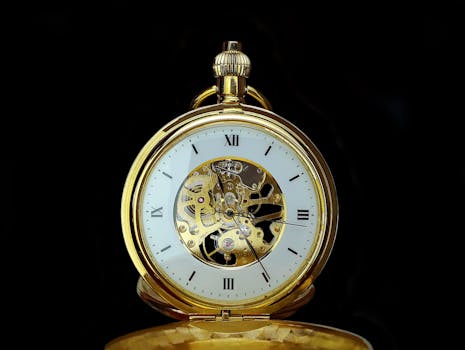Exploring the Intricacies of Watch Movements: A Comprehensive Guide
Takeaways: In this article, we will explore the three main types of watch movements: mechanical, automatic, and quartz. Each type has its unique characteristics, advantages, and disadvantages that cater to different preferences and lifestyles. By the end of this guide, you will have a deeper understanding of how these movements work and which type might be best for you.
Watches are more than just timekeeping devices; they are intricate pieces of craftsmanship that reflect personal style and technology. The beating heart of each watch is its movement, which determines how the timekeeping mechanism functions. Understanding the different types of watch movements can enhance your appreciation for this timeless accessory and help you make informed choices when purchasing a watch.
1. Mechanical Movements

Key Features of Mechanical Movements:
- Craftsmanship: Mechanical watches are often considered the pinnacle of watchmaking due to their intricate design and engineering. Each component is meticulously crafted, showcasing the artistry of horologists.
- Power Reserve: When fully wound, a mechanical watch can run for 48 hours to several days, depending on the design. This power reserve is essential for maintaining accurate timekeeping when not worn.
- Maintenance: Mechanical watches require regular servicing to ensure optimal performance, typically every 3 to 5 years. This maintenance includes cleaning, lubrication, and adjustment.
- Emotional Connection: Many enthusiasts appreciate the tactile experience of winding a mechanical watch and the connection it establishes with the watchmaker’s craftsmanship.
2. Automatic Movements

Key Features of Automatic Movements:
- Convenience: Automatic watches don’t require manual winding as long as they are worn regularly. The rotor continuously winds the mainspring, making them more user-friendly for daily wear.
- Same Craftsmanship: Like mechanical watches, automatic movements require skilled craftsmanship and are often seen as luxury timepieces.
- Power Reserve: Automatic watches typically have similar power reserves to manual mechanical watches but may vary depending on the model and brand.
- Variety: Automatic movements come in various designs, ranging from classic to contemporary, offering a wide range of choices for watch enthusiasts.
3. Quartz Movements

Key Features of Quartz Movements:
- Accuracy: Quartz watches are renowned for their precision, often deviating by only a few seconds per month, making them an excellent choice for those who prioritize accuracy.
- Low Maintenance: Unlike mechanical watches, quartz watches require minimal maintenance, with battery replacements being the primary service needed.
- Affordability: Quartz movements are generally less expensive to produce, resulting in a wide range of budget-friendly options for consumers.
- Diversity: The quartz movement’s versatility has allowed for the creation of many styles, from everyday casual watches to luxury timepieces.
In summary, whether you are drawn to the intricate craftsmanship of mechanical movements, the convenience of automatic watches, or the precision of quartz technology, each type of movement has its unique appeal. Understanding these differences can enhance your watch collection and ensure you choose the right timepiece for your lifestyle.






